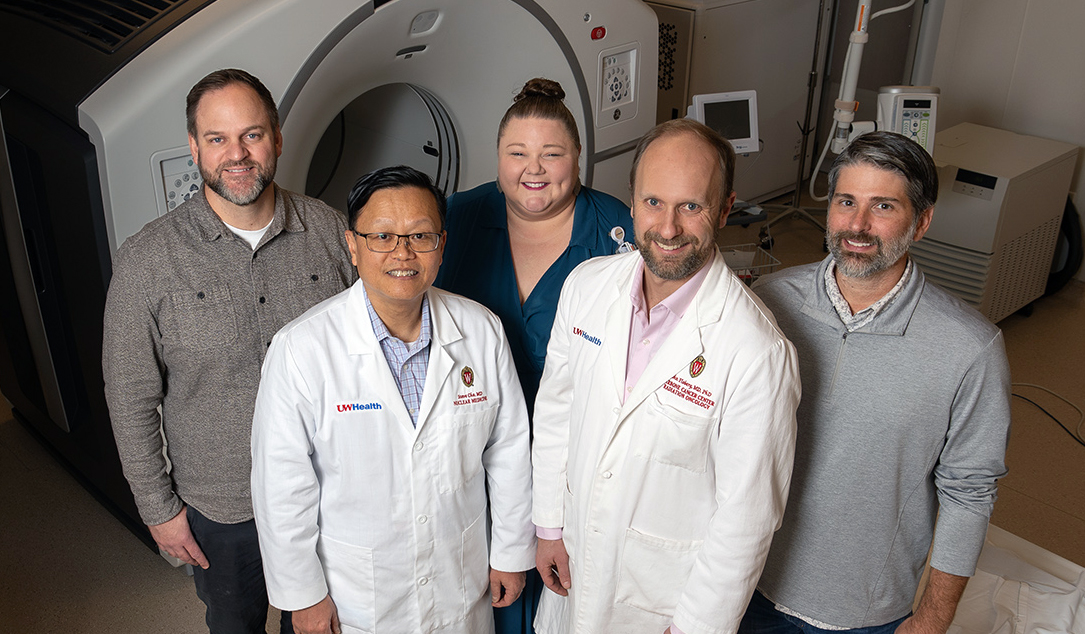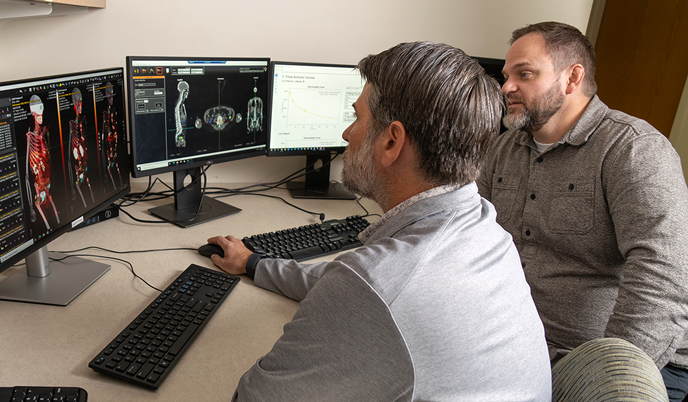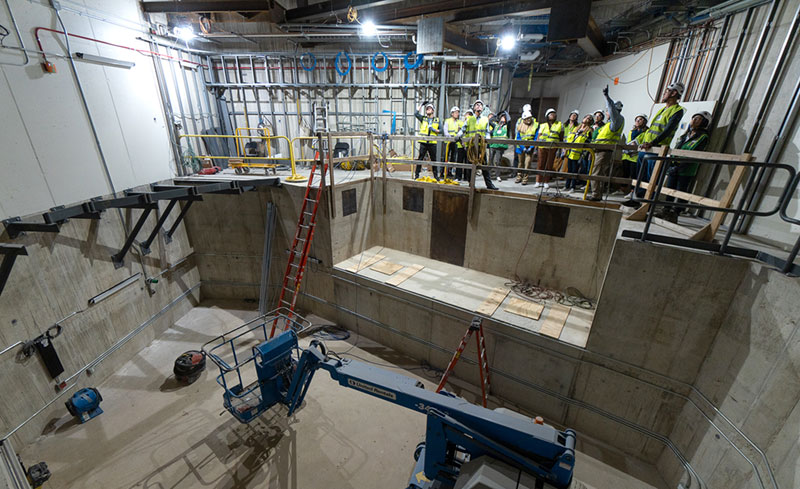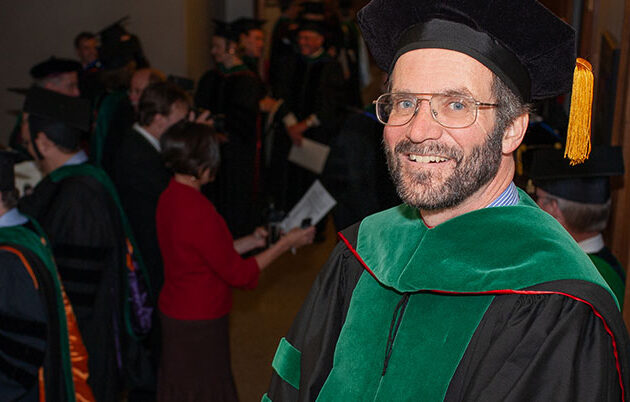Faculty members associated with the initiative also plan to establish premier graduate and fellowship training programs for researchers and practitioners in theranostics, particle therapy, dosimetry, and nuclear and radiochemistry, according to Jamey Weichert, PhD, professor, SMPH Department of Radiology, and co-director of the initiative.
“We are creating a destination theranostics and particle therapy clinical center at UW Carbone Cancer Center with this work,” says Weichert.
The initiative has membership criteria for researchers and clinicians at SMPH and UW Health who work in these areas and wish to become involved. The unit is governed by an executive board of six UW–Madison faculty members who engage in research, clinical care, and education related to theranostics and particle therapy.
This work is possible thanks to major federal funding provided to UW–Madison, including the first National Institutes of Health-supported program project grant for theranostics, explains Anjon “Jon” Audhya, PhD, senior associate dean for basic research, biotechnology, and graduate studies at SMPH.
“Over the last several years, our outstanding investigators have competed successfully for nationally recognized awards related to theranostics,” Audhya says.
The funding includes a recent $8 million grant to construct a new, national, theranostic cyclotron resource center that will drive fundamental and translational medical science. It also includes $20 million in grants from the National Cancer Institute, and a $1.5 million seed investment from the Wisconsin Alumni Research Foundation, according to Audhya.
He adds, “This support is critical because, ultimately, our goal is to be the preeminent site for preclinical and clinical theranostics research around the globe.”
Coming Attraction: Proton Beam Therapy
by Kris Whitman
Within the University of Wisconsin School of Medicine and Public Health’s (SMPH) Initiative for Theranostics and Particle Therapy, some faculty and staff members are focusing on particle beam radiation used in — for example — proton therapy. This type of radiation travels to a specified depth in the tissue and stops, thus reducing radiation exposure to healthy tissues and sparing treatment-related toxicities.
As research and training related to proton beam therapy continue in the Wisconsin Institutes for Medical Research, UW Health and the UW Carbone Cancer Center are advancing the first academic program in the world with upright proton therapy. Proton beam is among the most precise forms of radiation treatment that can target complex tumors that are close to vital organs. The ability to limit the delivery of radiation outside the tissues being treated is a major benefit when treating children who are still growing.
Traditional proton therapy is delivered to a patient lying on their back or stomach, while upright proton therapy will be delivered to patients who are sitting, enhancing comfort while taking advantage of more natural organ positioning. The upright technique developed by Leo Cancer Care allows treatment for patients with underlying health conditions — such as certain heart or lung conditions — that can make it difficult to lie flat for the duration of therapy. Upright patients also can interact more easily with health care professionals. For children, this may reduce the need for sedation during treatment.
For more than a decade, Paul Harari, MD, has focused attention on bringing proton beam therapy to UW Health. Following a rigorous evaluation of worldwide proton beam manufacturers, UW Health selected Hitachi in Tokyo to make this a reality. Harari explains that the new facility in Madison, being constructed at UW Health’s Eastpark Medical Center, “could be a paradigm changer because of the improved humanity for patients to interact with providers in the upright position and the more natural organ position that may offer advantages for normal tissue sparing. In addition, most patients are simply more comfortable being upright.”
A professor in the Department of Human Oncology, Harari describes the unique requirements and remarkable efforts of the planning and construction teams building the proton facility.





